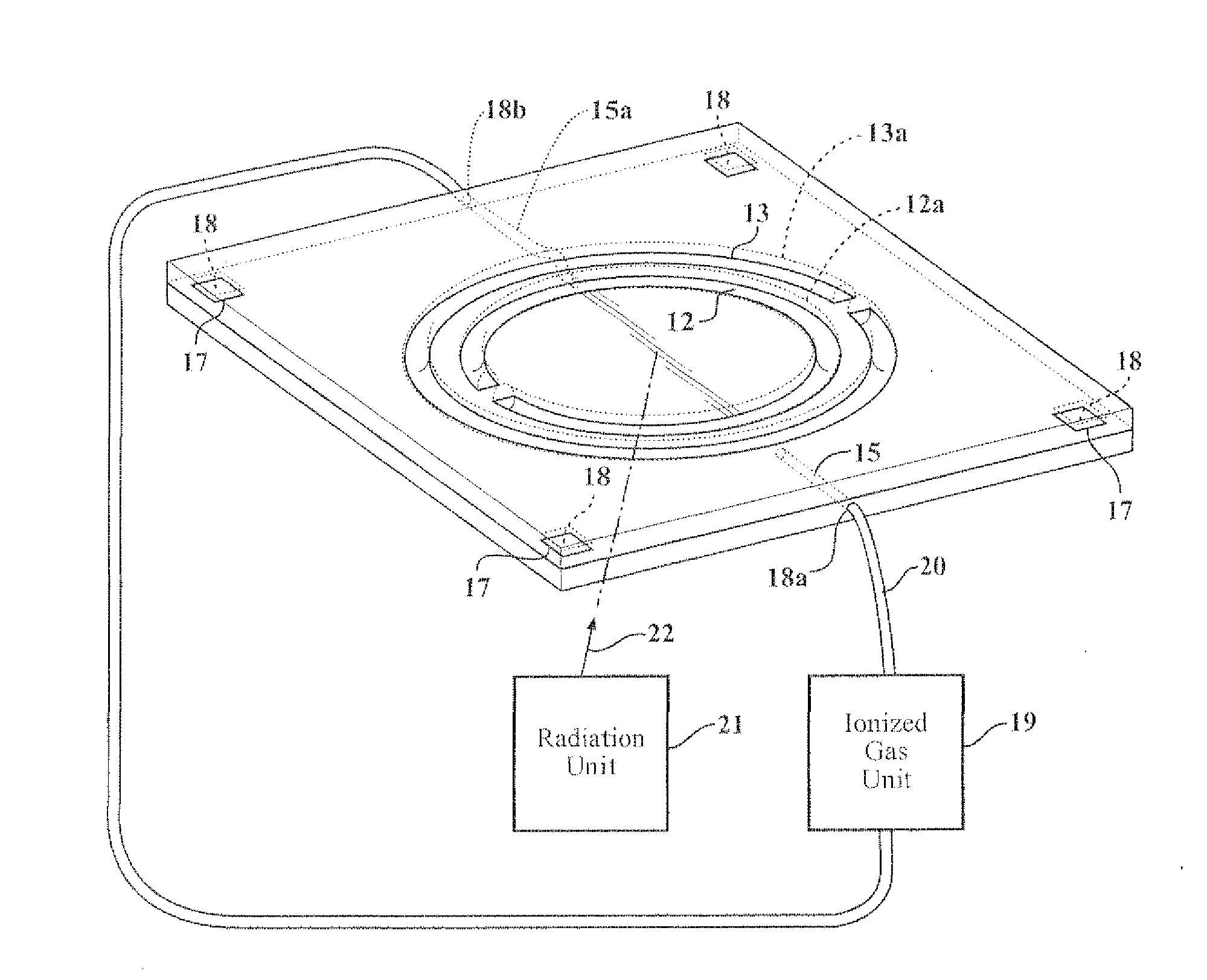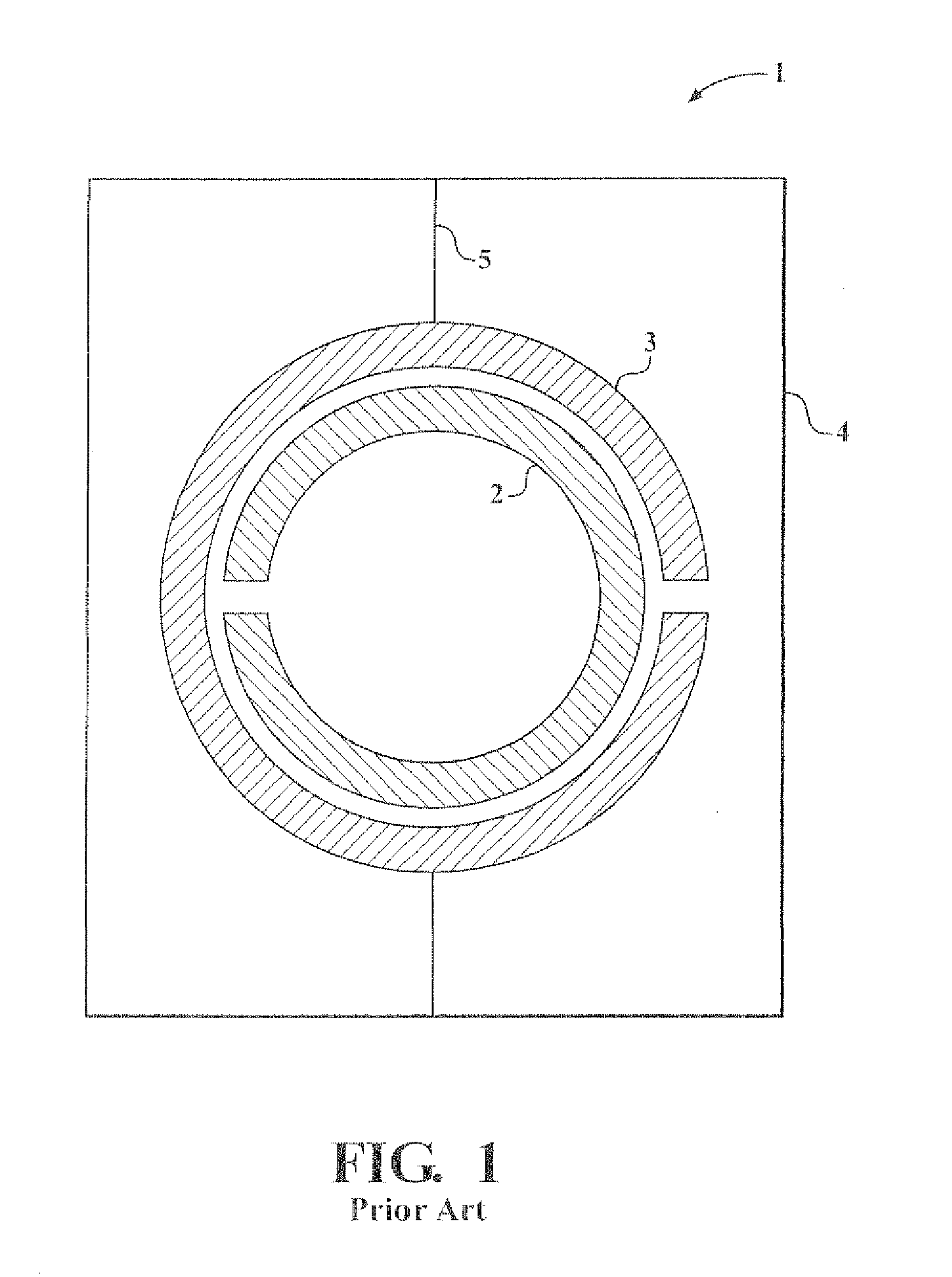Split ring resonator creating a photonic metamaterial
a resonator and split-ring technology, applied in the direction of active medium materials, waveguide devices, lasers, etc., can solve the problems of increasing the difficulty of manipulating metal wires, weak coupling of ordinary non-magnetic materials to magnetic fields, and large losses of ferromagnetic materials
- Summary
- Abstract
- Description
- Claims
- Application Information
AI Technical Summary
Benefits of technology
Problems solved by technology
Method used
Image
Examples
Embodiment Construction
[0048]A basic concept of aspects of the present invention is to employ ionized or charged gas, beam, or plasma, or any similar type of a particle-level nonmagnetic conductor in place of conventional metallic rings, into a very finely etched or formed space of a substrate to achieve a split-ring resonator (SRR) with a diameter substantially smaller than SRRs of the related art. In doing so, the SRR according to aspects of the present invention achieves a myriad of benefits not achieved by conventional SRRs, such as the manipulation of visible light and even higher frequency radiation. The SRR according to aspects of the present invention can be used to wirelessly transmit energy, encoded data, communication signals, and many other types of radiation in advantageous ways.
[0049]FIG. 2 depicts the relationship between the inner radii of a SRR and the frequency of radiation to achieve a resonant frequency rf. In FIG. 2, the vertical column on the left-hand side of FIG. 2 corresponds to t...
PUM
 Login to View More
Login to View More Abstract
Description
Claims
Application Information
 Login to View More
Login to View More - R&D
- Intellectual Property
- Life Sciences
- Materials
- Tech Scout
- Unparalleled Data Quality
- Higher Quality Content
- 60% Fewer Hallucinations
Browse by: Latest US Patents, China's latest patents, Technical Efficacy Thesaurus, Application Domain, Technology Topic, Popular Technical Reports.
© 2025 PatSnap. All rights reserved.Legal|Privacy policy|Modern Slavery Act Transparency Statement|Sitemap|About US| Contact US: help@patsnap.com



